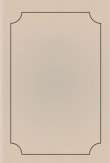قراءة كتاب Folklore as an Historical Science
تنويه: تعرض هنا نبذة من اول ١٠ صفحات فقط من الكتاب الالكتروني، لقراءة الكتاب كاملا اضغط على الزر “اشتر الآن"
tag="{http://www.w3.org/1999/xhtml}a">Frontispiece
Nos. 1-3 are taken from photographs, and show how the story of the Pedlar of Swaffham has been interpreted in carving. The costume of the Pedlar is noticeable.
Nos. 4 and 5 illustrate the traces of the Pedlar legend in Lambeth, and the costume of the Pedlar, though later than that shown in the Swaffham carving, exhibits analogous features which are of interest to the argument.
Nos. 6 and 7 show the site and general appearance of this interesting relic of the Roman occupation of Britain.
No. 8 shows the practice among the primitive hill-tribes of India of erecting memorials in stone to tribal heroes, and No. 9 is a curious illustration of the stones used as seats by tribesmen at their tribal assemblies. No. 10 is a general view of the site occupied by these stone monuments.
The tribal gathering is well illustrated by No. 11, and the moat hill is shown in No. 12.
Nos. 13-15 are selected from Sir William Wilde's admirable account of the great conflict on the field of Moytura. They serve to show that the fight was an historical event.
It is important to remember that the Romans recognised the gods of the conquered people, and this is one of the most important archæological proofs of the fact.
To the evidence derived from classical writers as to the nakedness of some of the inhabitants of early Britain, it is possible to add the evidence of the memorial stone. This example is reproduced from Sir Arthur Mitchell's Past in the Present, and there is at least one other example.



